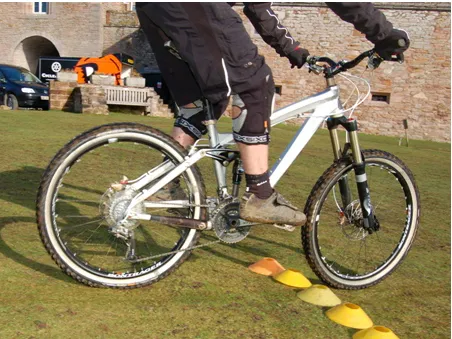Pedal progression show you how to tackle rock steps
Chris Ford of bike training and holiday company CycleActive also answers your question about mountain bike step-up technique.
Q: I consider myself to be a pretty good climber. I tuck elbows, drop wrists and keep a strong, even cadence. Trouble is, on one of my routes there's a root maybe 8-10 inches tall.
I have no problem lofting the front wheel over it, but because of my tucked position on this very steep part of the hill I am forwards on my seat and find it impossible to shift my weight forwards to clear the back wheel without spinning my wheels.
I’ve seen it done by others so I know it's do-able, but I’m at a loss. I've failed on both my hardtail and full-susser, both very good bikes. If you have any advice to help me clear it, I’ll trade it for all the swear words I’ve invented while failing. Hope you can help – Andy
A: Clearing a small step-up on a climb is easy using the wheelie. But when that step gets bigger you need to lift the back wheel too, otherwise you’ll either catch your big chainring or just stall as your back wheel slams into the face of the rock or root.
The first step is to practise lifting the back wheel over a small obstacle. Set out a bit of rope, marker cones or a bit of wood you can easily roll over.

In a standing position, body relaxed and limbs slightly flexed, roll towards the obstacle. As you approach, you need to angle your toes down and get ready to kick backwards and up, just after your front wheel crosses the line.
Imagine standing still and suddenly scooping your heels up behind you to kick yourself in the buttocks. Your body remains in one place – the lift comes from the quick back-and-up of the feet.

If you ride with clipless pedals you can, of course, just tug the feet upwards to get a similar effect. However, this lifts both the front and back of the bike, so you’re wasting effort. With the backwards flick/scoop the bike pivots around the front hub, which is more efficient. If you ride with flat pedals you have no choice – you have to use the correct technique.
With this mastered, try rolling towards a larger obstacle and first manualing the front wheel over, then lifting the back wheel. Do this at a steady pace so you can work on getting the timing right. As soon as the front wheel is clear, you need to throw your weight forwards to get that front wheel quickly back down, and enable you to lift the back.

Once this timing is working, do it with the pedal wheelie instead. This is harder than the manual as you first have to time the wheelie, then lift off the saddle, shift weight forward and flick up – all in the instant that the front of the bike passes over the obstacle.
When you try this on technical climbs you’ll be even more determined to get weight back onto the front wheel quickly. As long as it remains light, or airborne, you have no steering control and can quickly lose control. So practise that rapid weight shift, along with the flick up of the back wheel.
